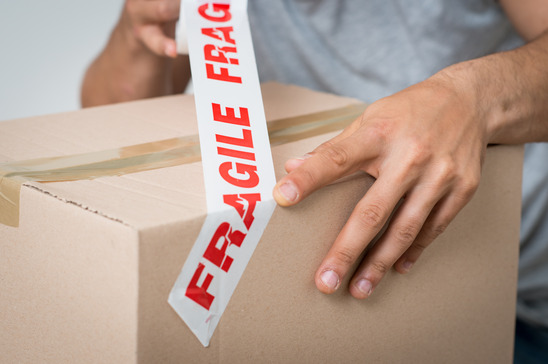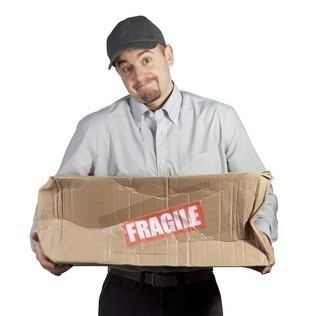
This guest post was written by Callum Mundine of One Egg. Last updated 8/19/2021.
E-commerce entrepreneurs who would rather stay on the entrepreneurial side of the business are usually part of the Fulfillment by Amazon program. They rely on Amazon to do the heavy lifting—fulfilling orders, customer service, managing returns, and the like. It may seem like a foolproof way of growing a profitable online business until consumers start returning products. Poorly managed Amazon FBA returns could lead to devastating losses. So, we’ve come up with a guide to help you manage your FBA returns, minimize losses, and create a more profitable business.
Today, we delve into the FBA program so you know exactly what you’re getting into before you even consider signing up.
The FBA Program: What Is It?

FBA is an order fulfillment solution that Amazon offers to its sellers. When you decide to register, you will have to prepare all the products you listed on Amazon and ship them to their warehouse. From there onwards, the retailer fulfills customer orders for you. They offer customer support. They will also manage returns on behalf of your company.
So, how exactly does Amazon manage returns?
Amazon seizes return funds from upcoming disbursements when they receive a return request from a customer who bought from you. They will also give the customer a shipping label so they may ship the item back to the right warehouse.
A warehouse worker then inspects the item that the customer returned. They have to decide if it’s in good condition or not. The product will be resold if it still looks great and functions properly, but once an item has been marked defective, most sellers would immediately have Amazon destroy it. That’s where all the losses start to pile up.
Employees often mistakenly brand items in sellable condition as unsellable. You could gain more losses than profits if that keeps on happening. Hence, you should always go the extra mile and see if an item is actually unfit for sale. You could reduce losses significantly as a result.
What to Do When a Customer Returns an Item

Here are a few steps you need to take once you’re notified that a customer has returned an item:
- Keep a record of the notification email.
- Ask for reimbursement from Amazon if the item isn’t returned within the 45-day period.
- Contact the buyer so you can protect your seller feedback.
- Create a removal order so you can inspect some of the returned items.
- List down all the reasons for their return.
- Inspect the items.
How Amazon Classifies FBA Returns

Amazon examines returned items and classifies them into different categories. Here’s how they do it:
Sellable
Items that are in great condition and function properly are labeled sellable. Amazon returns these products to your active inventory, where they will be resold to consumers. If you are worried about the condition of these returns, you can opt to check them yourself. Fill out a removal order so you can inspect sellable items personally.
Damaged
FBA returns that are tagged damaged won’t be resold. You may only receive reimbursement from Amazon if they are responsible for the damages. Let’s say a product is destroyed during transit because an employee failed to seal it properly. This makes Amazon accountable, and in such cases, you are eligible for reimbursement.
However, if the damage is somehow your fault, then you won’t receive compensation from Amazon. A simple solution to this would be to pack and protect the item well before shipping it to an Amazon warehouse.
Customer Damaged
Though customer damaged sounds like a classification for an item that was bought and broken by a consumer who is now trying to return it, it’s not. The term simply means that a customer opened the item, probably used it, and returned it in less than new condition. Customer damaged products won’t be resold as new, but they can still be resold in some other way.
There are times when shoppers say that they opened the product, but they never actually did. That means it’s still in new condition. You will be wasting potential profits if items are mislabeled as such. The best thing you can do is create a removal order to inspect the products yourself. You get to decide if it’s worth reselling as a new item.
Carrier Damaged
If any of Amazon’s selected carriers—FedEx, UPS, USPS, etc.—fail to take care of the packages while in transit, these items are marked carrier damaged. You are eligible for reimbursement. After all, you didn’t do anything to damage the products. And you entrusted Amazon to handle all your products with care.
Defective
FBA returns that are marked as defective are faulty or don’t function properly. Whenever this happens, customers are entitled to a refund. The items will stay in your inventory but will be considered unsellable. The thing is, buyers often say that an item is defective—even when it’s not—so they can have free return shipping.
To make sure that an item is actually defective, file a removal order. Get the product back for inspection. Without a doubt, you will find that a lot of “defective” items are in excellent condition. Send them back to the FBA warehouse if you see products that are in good condition so they can be resold as new. This way, you can minimize losses and boost your profits.
Remember that customer complaints about defective products can hurt your metrics. When you have an overwhelming number of these accusations, your account could be suspended. Of course, you can take action against such false claims to protect your account as well as your brand.
Conclusion

The FBA program is a wise idea if you run a mid-sized business. You can do what you do best—making your business prosper—while someone else handles all the routine tasks for you. But you don’t have to let Amazon take the reins completely just because you’ve delegated tasks. You need to step in every once in a while to make sure that everything is done correctly.
In doing so, you should be able to minimize loss, improve profits, and protect your brand name from untruthful claims. If you want your business to flourish, participate in the order fulfillment process in the aforementioned ways.
So, are you ready to fill out those removal orders?
Author Bio: Callum Mundine is part of the marketing team at One Egg. He is an Amazon marketplace & white hat link building specialist, and has launched multiple successful brands on Amazon.com. Callum likes his eggs boiled.




